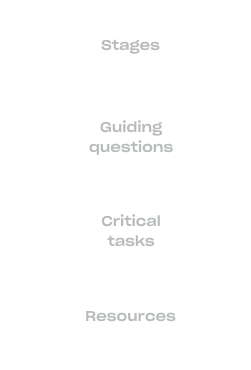About
Why this website?
This website offers city leaders guidance on diagnosing fiscal challenges and making informed policy and budgetary decisions by helping to:
- Identify key questions to get a sound and comprehensive picture of their city’s fiscal situation. It lays out a set of guiding questions and associated critical tasks that can help city leaders structure their thinking around the challenges they are facing.
- Identify resources to help with these questions and tasks. With this guide, city leaders can find relevant questions and link them to the relevant issues with which they are grappling.
- Organize resources in a clear and actionable format. Each good practice or resource is summarized concisely with links to more detailed information. This helps city leaders quickly scan action alternatives and find further information as needed.
This website and the accompanying guide were originally developed in response to the economic and financial consequences of the COVID-19 pandemic. Lockdowns had begotten economic paralysis, causing a dramatic decrease in city revenues. At the same time, cities were being called on to increase spending. Expected to deliver more with even less, cities were forced to rethink their budgets radically and make tough choices.
The tools offered here, however, are broadly relevant, beyond just the COVID era. They are intended to support cities in all stages of growth and experiencing many types of challenges, from responding to urgent crises to setting the foundation for recovery and maximizing transformative impact. While there are no perfect solutions and no painless remedies, leaders can still take measures that make the best of a bad situation: a data-driven, innovation-oriented approach can help city leaders avoid “lose-lose” scenarios and even find opportunity in the current predicament.
City leaders are not always familiar with the technical jargon of municipal finance and the nuts and bolts of the budgetary structure and process. They also typically lack the time to read up on relevant resources when they need them. This guide has been designed with these things in mind.
The Journey towards Fiscal Resilience
The website is structured around the Respond, Stabilize and Transform framework. This framework recognizes that cities will go through different phases in their journey out of this crisis and towards becoming more fiscally resilient.
During the respond phase, uncertainty is very high and there are many unknowns. In this stage, the focus is on responding to the immediate crisis, while creating space for more sustainable reform.
In the stabilize phase, the initial uncertainty will start to decrease, and the sources of information will be clearer and more reliable. The goal of this phase is to move beyond short-term stabilization and establish the basis for recovery.
Cities will enter the transform phase when uncertainty is at reasonable levels and city leaders can focus on transforming the city’s financial structure to increase resilience. The actions and decisions in this stage will be directed towards maximizing impact and adaptability to changing conditions.
While the three-stage framework can help structure your thinking about the journey towards fiscal resilience, it is important to highlight that this is not a linear process. Cities are likely to be coping with all three phases simultaneously across different subject areas, for example, they may be responding to new developments in public health, stabilizing the school budget and working to transform the procurement process in public works at the same time. Additionally, steps taken in the short term may have an impact down the line.
Structure of this Website
The Guide is organized around the “Respond, Stabilize and Transform” framework. It takes a funnel approach, starting with one set of guiding questions per phase. Each of the questions then has a set of critical tasks that will help you respond to that question. Finally, each critical task contains multiple resources: videos, podcasts, readings or promising practices from other U.S. cities. The graphic below depicts the funnel approach, using the respond phase as an illustration:


What this guide does and does not do
Through its interactive navigation, the website helps guide city leaders’ thinking and connects them with useful knowledge to act on and share with their teams. This website does not, however, provide an exhaustive assessment of a city’s fiscal situation. Even when conducting inquiry and assessment using all resources included in this tool, cities should still complement it with more deep dives with experts and technical advisors on specific areas.
The website does not prescribe any concrete measures for a particular city, nor does it assume that the examples or practices contained in this guide are one-size-fits-all solutions for any city’s particular situation. To the contrary, the necessary actions for each city should be informed by an evaluation of the specific conditions, context, and options available to that city. Above all, the website emphasizes the importance of diagnosis and assessment using data, strategic and creative thinking, stakeholder engagement, and learning from others.
Feedback
This website intends to be a living “document” and a knowledge exchange platform for cities, so please do share any ideas or examples from your city that may be helpful for other cities around the country.
This is a beta version. We will keep updating the guide and suggestions for improvement are welcome.
We look forward to hearing from you. Email us at cityleadership_research@harvard.edu.